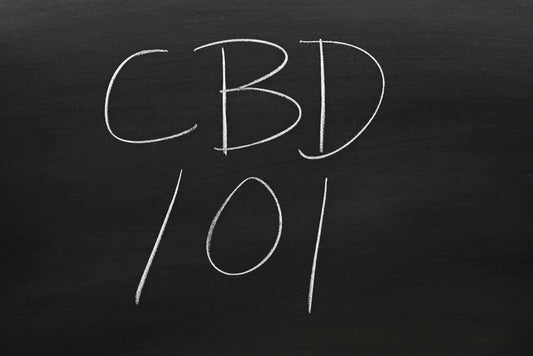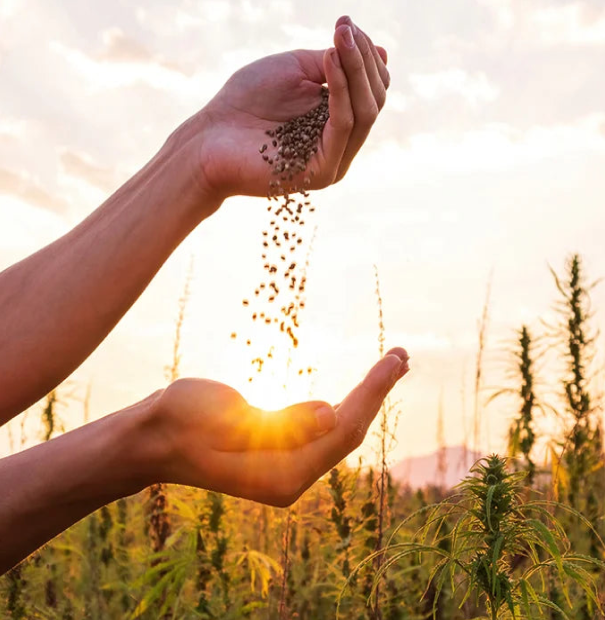CBD 101: A Brief Introduction to CBD

It’s safe to say you’ve heard about CBD. Maybe you’ve seen CBD for sale online or at select retail locations. Perhaps you’ve got a work colleague who swears by CBD for supporting his stress levels, or your best friend can’t stop talking about how much better she’s sleeping since she started taking it.
Countless individuals across the country are changing their opinion about cannabis because of CBD. If you’re one of them, you’re likely curious to learn more. Becoming educated about legal cannabis-derived products such as CBD can allow you to make an informed decision when determining if CBD might be beneficial for you or your loved ones.
CBD 101
CBD, or cannabidiol, is a compound found primarily in the flowers and leaves of the hemp plant. CBD (cannabidiol) is one of over 100 active compounds found in the hemp plant called cannabinoids.
The most abundant cannabinoids in the cannabis plant are CBD and THC (tetrahydrocannabinol), the cannabinoid famous for the intoxicating effects cannabis is widely associated with.
While CBD and THC do share similar therapeutic potential, there is one major difference between the two. Unlike THC, CBD doesn’t cause intoxication. This is because the two cannabinoids interact differently with various receptors found throughout the body and brain.
Because CBD contains such appealing potential and doesn’t cause any intoxicating effects, it’s quickly become one of the most talked about natural wellness products in history. For those who might be skeptical about consuming products derived from cannabis, CBD is a great place to start.
CBD is clinically proven to impact mental and physical well-being, when taken properly and consistently. It’s a powerful health agent, especially when paired with other cannabinoids and cannabis compounds that create the “entourage effect,” an idea that cannabis compounds work better together than isolated counterparts.
Where Does CBD Come From?
CBD and other cannabinoids are produced in sticky, resinous glands on cannabis flowers known as trichomes. The word “cannabis” actually refers to the species of plant, cannabis Sativa L, of which there are two distinct “varieties” and several different “strains.”
The words hemp and marijuana refer to the two distinct varieties of cannabis. A strain refers to different types of hemp and marijuana that have been bred for specific effects.
Hemp bred for the purpose of CBD oil contains low levels of THC and higher levels of CBD. Under the 2018 Farm Bill, hemp cultivated for the purpose of producing CBD products must contain less than 0.3% THC. The legal CBD products that are widely available online and in select retail locations across the country are derived from hemp and cannot exceed the legal limit of less than 0.3% THC.
What Are The Most Common Reasons People Use CBD?
While CBD research is limited due to regulatory restrictions on cannabis, there are several studies that show the cannabinoid has serious potential, and CBD is suggested to contain a wide ranging therapeutic profile.
While more clinical studies are needed, current research implies CBD holds great promise and could support several different conditions. According to a 2019 Gallup Poll survey, the most common reasons people use CBD are physical discomfort (40%), stress (20%) and sleep (11%).
What do people that use CBD have to report about its effects?
- 89% of CBD users report that CBD helps calm their mind.
- 89% of CBD users say CBD helps them get better sleep.
- 88% of CBD users find CBD helps with stress.
- 84% of CBD users report that CBD helps relieve physical discomfort after physical activity.
Despite the lack of clinical evidence, CBD seems to be doing something right. By 2022, the CBD market is projected to be worth $22 billion. It’s everywhere, offering a natural alternative for the potential relief of a multitude of different conditions. If you’re interested in exploring the world of legal cannabis-derived products, non-intoxicating CBD is the perfect place to start.




